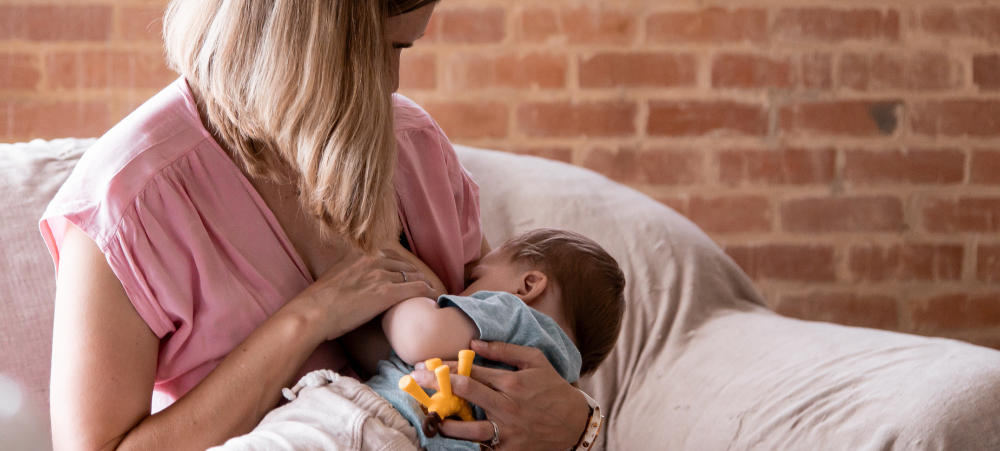New times call for new tools and as a new Mum you will be discovering one of the most useful tools in your baby care collection that will support both your preparedness and peace of mind and your baby’s health and future development. Before you get nervous about tackling something new, using a breast pump is easily accomplished and once you get the hang of it, it will be like riding a bicycle hands-free.
Firstly, why is a breast pump so necessary?
- To keep your baby supplied with an adequate supply of mother’s milk for their recommended two-year breastfeeding journey.
- To express milk for when you are away from your baby (or if they are prem or ill).
- You need to return to work after maternity leave and leave baby with a caregiver.
- Your infant is unable to nurse properly.
- To create an emergency supply.
- Your breasts are leaking, and you need to release the pain from engorgement.
- To supplement your baby’s first solid foods at meal times
- To allow other family members to step in and be involved in baby’s care.
- To support tired Moms by offering periods of rest and extended sleep time.
Best for You

There are three types of breast pumps available to new mothers and you will need to decide which is best suited to you and your new mothering lifestyle.
If you are on an extended maternity leave and you plan to pump only once or twice a week, such as when you are going out dining and drinking for a special occasion, then a manual breast pump should be adequate for your needs. The Vital Baby Manual Breast Pump massages the breast by gently mimicking the natural suckling action of your baby to provide the most natural and effective experience.
If you need to return to work after maternity leave, you may want to consider an electric pump to help save you time and convenience during your busy work week. The Vital Baby Electric Breast Pump behaves the same way as your baby would when feeding, offering a 2-phase expression for the most effective, fast and comfortable way of promoting breastmilk production. Phase one offers fast, small pulses to first massage and stimulate the breast to help induce milk flow. Phase two has slower and longer pulses to encourage ‘let down’, the clever natural hormone reaction where your milk will start to flow smoothly.
With South Africa experienced unprecedented bouts of loadshedding, you will need to consider the charging capabilities of an electric breast pump and whether it is electric-only, battery operated or comes with a USB charging option. Vital Baby  is the only breast pump available on the local market where the electric breast pump can be used as both a manual breast pump and an electric breast pump when the power goes off, so you are not left stranded.
is the only breast pump available on the local market where the electric breast pump can be used as both a manual breast pump and an electric breast pump when the power goes off, so you are not left stranded.
The third type of breast pump is a hospital-grade pump which is necessary for babies who are required to stay in the hospital due to health issues or following birth complications and requires you to pump up to eight or more times a day to supply milk for your new born and establish your milk supply.
Some medical aids make breast pumps available through their maternity benefits up to a certain price limit, so check in with yours to explore your options and discover a breast pump best suited to your needs. Consider choosing a lightweight and low sound breast pump so you can stay mobile and pump wherever and whenever you need to.
“I underestimated how important my breast pump would be with my first child,” says mum-of-three Brooke West. “It was around holiday time, and I was celebrating with family over a 3-course meal which I enjoyed along with a sneaky glass of champagne so I could feel part of the fun. My poor son was so gassy, niggly, and uncomfortable all of the next day, that I never made that mistake again. My breast pump became my best friend when planning to eat and drink foods without it harming or effecting my baby.”
While alcohol remains an absolute no-no when breastfeeding babies, some foods can also cause upsets in your child’s digestive system and well-being, such as beans, broccoli, cauliflower, and some dairy products. Common allergy-causing foods include cow’s milk, soy, wheat, corn, oats, eggs, nuts and peanuts, and fish or shellfish.
Some of the most frequently asked questions about breast pumps are answered here:

How does it work? If you attended pre-natal classes before the birth of your baby, you may have been introduced to breast pumps already. It helps to be able to hold and feel the fit of the breast pump when figuring out how to use it for the first time.
The flange is the plastic cup piece that fits over your breast nipple and areola (the dark skin surrounding your nipple) to create a light seal against your skin. When pumping, your nipple should be able to move freely inside the tunnel of the cup without too much of the areola being drawn in. The flange should create a light suction pressure to express the milk from your breast to flow into the bottle.
TIP: Breast pumping should never feel sore or uncomfortable.
When can I start breast pumping? New moms can start pumping at any time, however when you first start pumping you aren’t going to get a lot of breast milk into the bottle. This is because for the first several days after birth, your body is producing colostrum, which is thicker and a little more difficult to pump than the milk you will product later on. Keep going and try not to be frustrated. The key to pumping is to relax and think loving thoughts about your baby for the let-down reflux to kick in. If your baby is latching well, you are sure to find your mojo quickly. Within two to three weeks, your milk supply will have come in and be of ample flow to support your baby’s needs.
TIP: Some women choose to breast pump exclusively, while other mothers feed baby and breast pump at the same time.
How long does breast milk last in the freezer? You can store your breastmilk in the freezer for up to 12 months, but it is advised to use it before six months. If for some reason you can’t breastfeed your baby normally, start breast pumping within six hours of the birth for at least eight to ten times a day to establish your milk supply for when you are able to breastfeed.
 TIP: When storing your breast milk in the freezer, ensure you invest in products designed for breast milk to maintain the quality of the milk and to ensure no breakages when thawing milk from frozen. The Vital Baby range of Easy Pour Breastmilk Storage Bags, leakproof secure seal ensures no milk is lost when storing your breast milk in the fridge or freezer and the wide neck and free-standing base of each storage bag make it easy to fill.
TIP: When storing your breast milk in the freezer, ensure you invest in products designed for breast milk to maintain the quality of the milk and to ensure no breakages when thawing milk from frozen. The Vital Baby range of Easy Pour Breastmilk Storage Bags, leakproof secure seal ensures no milk is lost when storing your breast milk in the fridge or freezer and the wide neck and free-standing base of each storage bag make it easy to fill.
Do I have to wash my breast pump after every use? Yes, this is important for the health of you and your baby. Make it part of your breast pumping routine to either boil the breast pump parts on a pot on the stove, sterilise them inside the microwave or use hot, soapy water followed by a good rinse.
TIP: If you are at work and it is difficult to clean your breast pump effectively, store the milk and the breast pump together in the refrigerator, to take home and wash there. The Vital Baby 2-in-1 Sterilizer is designed to give you ultimate convenience and peace of mind, killing 99.9% bacteria to keep your baby healthy and happy. This microwave and cold water steriliser combination offers total flexibility depending on your needs.
How much breast milk should my baby be drinking? A breast pump is pivotal in helping new mothers establish how much breast milk your child needs each day to grow and thrive and supports you in providing the adequate amount of breast milk a baby needs each day. Some babies are champion breast feeders from the beginning, while other babies may experience bumps along the lactation journey, such as latching difficulties, having a weak sucking action, thrush of the mouth or you have a low milk supply.
TIP: Your breast pump will ensure enough milk supply is made available and is ready to be used. When using a bottle to feed your infant breastmilk, you can assess how much your baby is receiving, helping you to better establish and manage your daily and nightly feeding schedule. The Vital Baby Breastlike Feeding Bottle makes transition between breast and bottle easier. When breastfeeding, your nipple naturally flattens when in your baby’s mouth. Vital Baby’s breast like teats are designed to mimic breastfeeding, helping avoid bottle confusion.
Breast pumps come a long way since they were first introduced onto the market in the mid-19th century as a way to help mothers who had inverted nipples or whose infants were too small or weak to nurse. Today, the modern design of Vital Baby Breast Pumps offers an efficient, discreet, and technologically sophisticated breast pump that you can pop in your hand bag and take with you wherever to go, ensuring your baby gets its best chance to grow and thrive while you still get to live your best life.
Vital baby is an award-winning range which is 100% BPA-free and includes a line for every stage of your baby’s development.
Instagram: vitalbabysa
Facebook: Vital Baby South Afric
- Co-Sleeping, Cribs, or Sleep Training — What Works Best? - November 10, 2025
- Can Moms Really Afford to Breastfeed? - October 15, 2025
- Lesser-Known Pregnancy Risks That Need To Be Discussed - September 22, 2025





